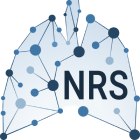Genetic subtypes of large cell neuroendocrine carcinoma (LCNEC) can predict response to chemotherapy
J.L. Derks, N. Leblay, R. J. van Suylen, E. Thunnissen, M.A. den Bakker, H.J. Groen, E.F. Smit, R.A. Damhuis, E.C. van den Broek MS, A. Charbrier, M. Foll, J. D. McKay, PALGA-group, L. Fernandez-Cuesta, E.J. Speel, A.M. Dingemans.
Introduction: To treat LCNEC with non-small cell lung carcinoma type chemotherapy (NSCLC-ct, i.e. gemcitabine/taxanes or pemetrexed) or small cell lung carcinoma type (SCLC-ct, i.e. platinumetoposide) is subject of debate. Molecular studies have identified two mutually exclusive subtypes in LCNEC, the co-mutated TP53 and RB1 and the STK11/KEAP1 (predominantly RB1 wildtype(wt)) group. We investigated if overall survival (OS) and progression free survival (PFS) correlates with targeted
next-generation sequencing (TNGS) results in LCNEC treated with NSCLC-ct or SCLC-ct.
Methods: For this population based retrospective cohort study all diagnoses of stage IV ct treated high grade neuroendocrine carcinomas (NEC, not being SCLC) were retrieved from the Netherlands Cancer Registry and Pathology Registry (PALGA) (2003-2012). Panel-consensus pathology revision of original tumor slides was performed on (N=230) and TNGS for genes TP53, RB1, STK11 and KEAP1 analyzed with a multi-sample variant caller (Needlestack).
Results: LCNEC was consensus diagnosed in 146/230 and 77 passed quality control for TNGS. Mean coverage was 2832x, a mutation(mt) in TP53 was present in 87%, RB1mt in 46%, STK11mt in 13% and KEAP1mt in 18% of sequenced LCNEC. RB1 was co-altered with TP53 in 94% of LCNEC; mutually exclusive to STK11mt (100%) but not KEAP1mt (57%). NSCLC-ct or SCLC-ct was specified in 92% of patients and RB1wt LCNEC treated with NSCLC-ct (n=22) showed a trend to better OS compared to SCLC-ct (n=13) (8.5 months (95% confidence interval (CI): [6.3-10.6]) vs. 5.8 [5.5-6.1] months, p=0.055). Due to reported resistance in NECs we analyzed NSCLC-ct without pemetrexed-ct; OS was significantly longer for NSCLC-ct (n=15) compared to SCLC-ct (9.6 [7.7-11.6] vs. 5.8 [5.5-6.1] months, p=0.026). PFS of RB1wt NSCLC-ct treated patients was significantly longer than SCLC-ct (p=0.044), without pemetrexed (p=0.018). In patients with RB1mt LCNEC OS/PFS was not significantly different for NSCLC-ct vs. SCLC-ct.
Conclusions: In LCNEC with RB1wt, NSCLC-ct correlates with a more favorable outcome compared to SCLC-ct. However, RB1mt LCNEC treated with NSCLC-ct do similarly worse as SCLC-ct. Prospective studies should be initiated.

